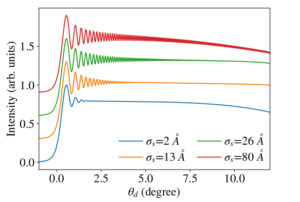
In 1924 Louis de Broglie postulated that electrons possess a wave nature, and only three years later this was confirmed in experiments by Davisson and Germer. In modern high-resolution electron microscopy the wave nature of electrons plays a central role in image formation. Yet in the conventional theory of electron sources, which are crucial components in determining the performance of these instruments, electrons are still treated as classical particles. In this publication we address this problem by introducing a wave-mechanical electron-optical model of electron sources. Using our model we investigate a low-energy electron microscopy technique that is a direct implementation of Gabor’s concept of in-line holography and show how the spatial resolution is determined by the coherence and aberration properties of the source. The simulated in-line holograms of an infinitely sharp edge (see figure) show that the coherence of the electron source (σs) has a significant influence on the visibility of the diffraction fringes in the hologram. The maximum achievable spatial resolution following holographic reconstruction is directly proportional to the number of visible fringes. From insights obtained using our model we propose specific strategies, e.g., the use of novel materials for the electron source, to help realize better and more coherent electron sources that can significantly benefit electron microscopy, lithography, and many other electron based techniques that make use of them.
Full publication: F. Krečinić and R. Ernstorfer, Physical Review Applied 15, 064031 (2021).